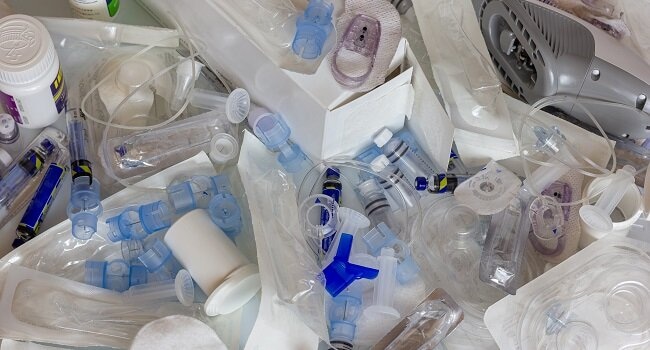Biomedical waste is a serious matter. Hospitals, clinics, and labs produce tons of it daily. Throwing it out carelessly can harm people and the environment. This healthcare waste includes a wide range of potentially hazardous materials, from used syringes and contaminated personal protective equipment to chemical reagents and radioactive isotopes. Proper disposal is not just a matter of regulatory compliance but a critical step in safeguarding public health and ecosystem integrity.
Let’s dive into the right ways to get rid of this dangerous stuff.
What Counts as Biomedical Waste?
Before talking about disposal, you need to know what biomedical waste actually is. It includes:
- Used needles and syringes
- Bloody bandages and dressings
- Expired medicines
- Lab cultures and samples
- Body parts and tissues
- Used gloves and masks
Basically, if it’s from a medical setting and could spread disease, it’s a biomedical waste.
Why Proper Disposal Matters
Getting rid of biomedical waste the right way is crucial. Why? Because it keeps everyone safe. Improper disposal can lead to:
- Spread of infections
- Pollution of water sources
- Harm to wildlife
- Accidental needle sticks
- Legal trouble for healthcare facilities
The consequences of mishandling this waste are severe. That’s why getting biohazard cleanup services from professionals is a must.
Sorting: The First Step
Proper disposal starts with sorting. Different types of waste need different treatments. Here’s a basic breakdown:
- Sharps: Needles, scalpels, and other pointy objects go in special puncture-proof containers.
- Infectious waste: Blood-soaked items, cultures, and anything that could spread disease need careful handling.
- Chemical waste: Lab chemicals and certain medications require special disposal methods.
- Radioactive waste: Some cancer treatments produce radioactive waste. This needs expert handling.
- General waste: Regular trash from medical settings that isn’t contaminated can go in normal bins.
Sorting might seem like a hassle, but it’s essential for safety and efficiency.
Color-Coding: Making It Clear
To make sorting easier, many places use a color-coding system. Here’s a common one:
- Red: Infectious waste
- Yellow: Chemical waste
- Black: General waste
- Blue: Glass waste
Using different colored bags and containers helps everyone quickly identify what goes where. It’s a simple but effective way to prevent mix-ups.
Treatment Methods: Making Waste Safe
Once sorted, biomedical waste needs treatment before final disposal. The goal is to make it non-infectious and safe. Here are some common methods:
Autoclaving
This method uses high-pressure steam to kill germs. It’s great for things like lab cultures and some types of infectious waste. The process is similar to a pressure cooker but on a much larger scale.
Incineration
Burning waste at very high temperatures destroys pathogens and reduces volume. It’s often used for body parts and other highly infectious materials. Modern incinerators have filters to reduce air pollution.
Chemical Disinfection
Some waste can be treated with strong chemicals to kill germs. This method works well for liquid waste and some solid items. The chemicals used are carefully chosen to be effective yet environmentally friendly.
Microwave Treatment
Specialized microwave units can disinfect some types of waste. This method is becoming more popular because it’s energy-efficient and doesn’t produce harmful emissions.
Final Disposal: Where Does It All Go?
After treatment, biomedical waste still needs somewhere to go. Options include:
Landfills
Treated waste that’s no longer infectious can go to special landfills. These are designed to prevent any remaining contaminants from leaching into the soil or water.
Recycling
Believe it or not, some biomedical waste can be recycled. Plastic from IV bags and some types of packaging can often be reprocessed if they’re properly decontaminated first.
Return to Manufacturer
Some items, like unused medications or faulty medical devices, can be sent back to the companies that made them. They have specialized processes for dealing with their own products.
Training: Key to Success
All the best methods in the world won’t work if people don’t use them correctly. That’s why training is crucial. Everyone who handles biomedical waste needs to know:
- What counts as biomedical waste
- How to sort it properly
- The right handling procedures
- What to do if there’s a spill or accident
- The importance of personal protective equipment (PPE)
Regular refresher courses keep everyone up to date on the latest guidelines and best practices.
Tracking and Record-Keeping
Proper disposal doesn’t end when the laboratory waste leaves the facility. Good record-keeping is essential. This includes:
- How much waste is produced
- What types of waste are generated
- Where it’s sent for treatment and disposal
- Any incidents or accidents
These records help facilities stay compliant with regulations and identify areas for improvement.
Challenges and Solutions
Dealing with biomedical waste isn’t always straightforward. Common challenges include:
- Cost: Proper disposal can be expensive. But the cost of not doing it right is even higher.
- Space: Storing waste safely takes room. Good planning and frequent pickups can help.
- Compliance: Keeping up with changing regulations can be tough. Regular training and audits are key.
- Emergency situations: Disasters or outbreaks can lead to sudden increases in hazardous waste. Having a flexible plan is important.
By anticipating these issues, facilities can develop effective solutions before problems arise.

Conclusion
Proper biomedical waste disposal is a critical part of healthcare. It protects patients, staff, the public, and the environment. While the process might seem complex, it boils down to a few key steps: correct sorting, appropriate waste treatment, and responsible final disposal. With good training, clear procedures, and a commitment to safety, healthcare facilities can manage their biohazardous waste effectively. It’s not just about following rules – it’s about caring for our communities and our planet.




















